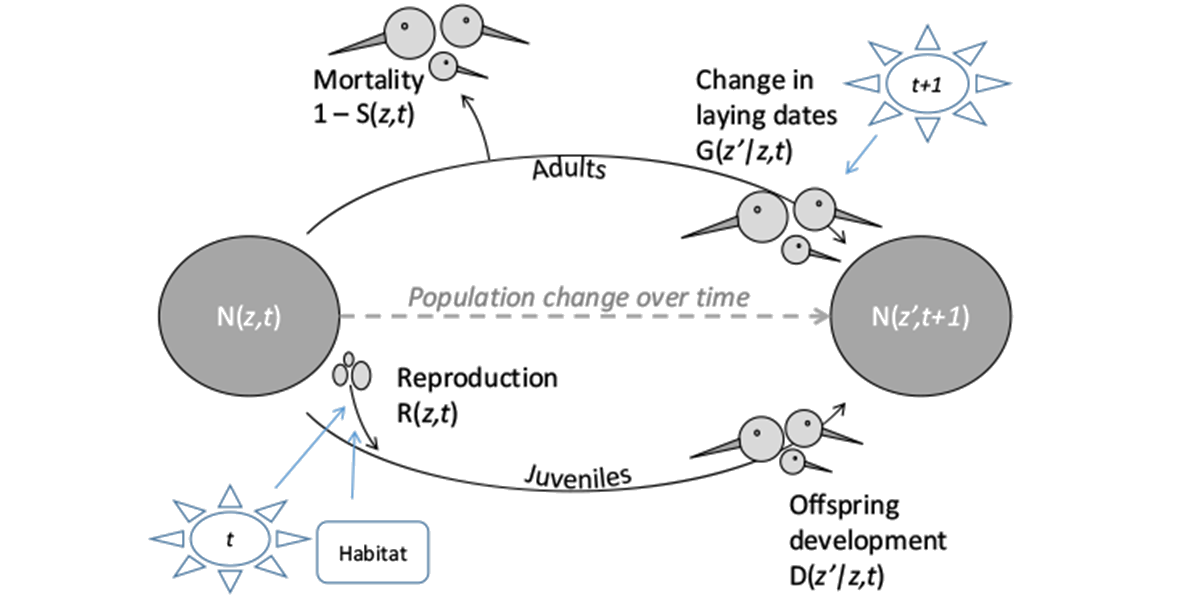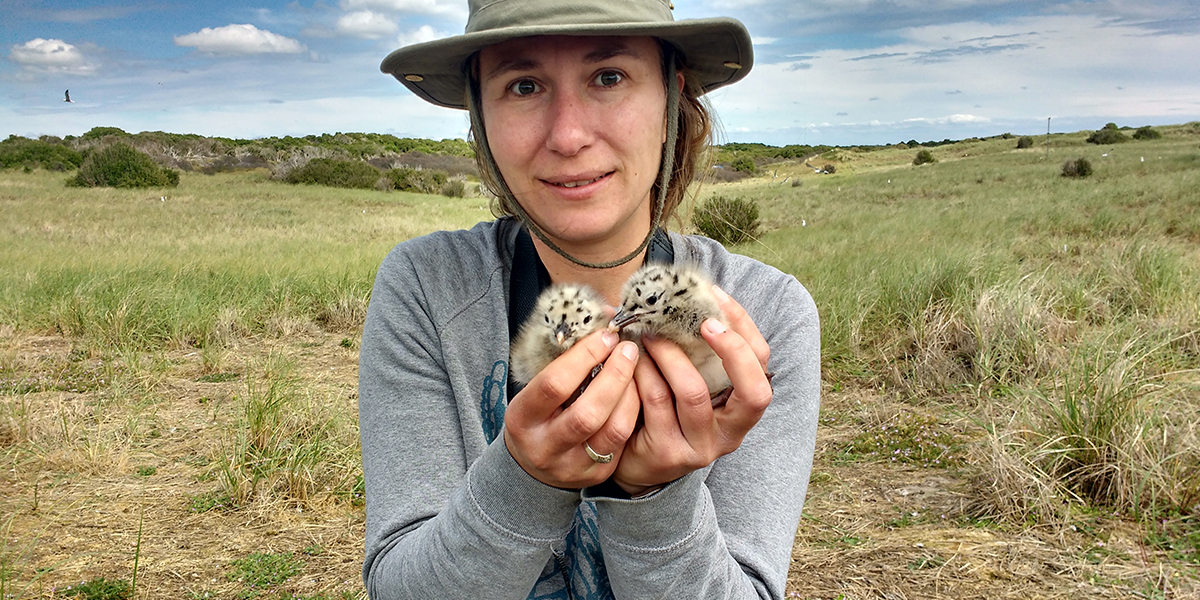Integral Projection Model

Including intra-specific variation
To understand the causes of growth or decline of populations we use stage-structured population models, which includes information of birth and death rates. However, animal populations consist of individuals all differing from each other, and some traits in which they differ may affect birth and death rates. Simultaneously, depending on how these traits passes on to the next generation, birth and death rates affect the dynamics of these traits. One type of modelling framework we use to include intra-specific variation is called Integral Projection Model (IPM). With IPMs, we can forecast population sizes and trait distributions, and therefore they are useful to study ecological and evolutionary change.
For example, we investigated the role of advancing springs on laying dates and population growth of black-tailed godwits. The main result is that the effect of climate change would only be negative in breeding habitats that are of lower quality. This has consequences for conservation: it is important to preserve landscapes in which species are able to keep up with climate change.
Future projects
Other future projects include (1) studying the role of Arctic warming on body sizes of Red Knots, and (2) studying how diet specialisations of Lesser Black-backed and Herring Gulls affect population size when food availability will change.
Publication
Kentie, R.; Coulson, T.; Hooijmeijer, J.C.E.W. ; Howison, R.A.; Loonstra, A.H.J.; Verhoeven, M.A.; Both, C.; Piersma, T. (2018). Warming springs and habitat alteration interact to impact timing of breeding and population dynamics in a migratory bird. Glob. Chang. Biol. 24(11): 5292-5303. https://doi.org/10.1111/gcb.14406
For information on this model, please contact Roos Kentie by email (preferred). You will get a response as soon as possible. In urgent matters, you can contact her directly.
T +31 (0)222 369 483
